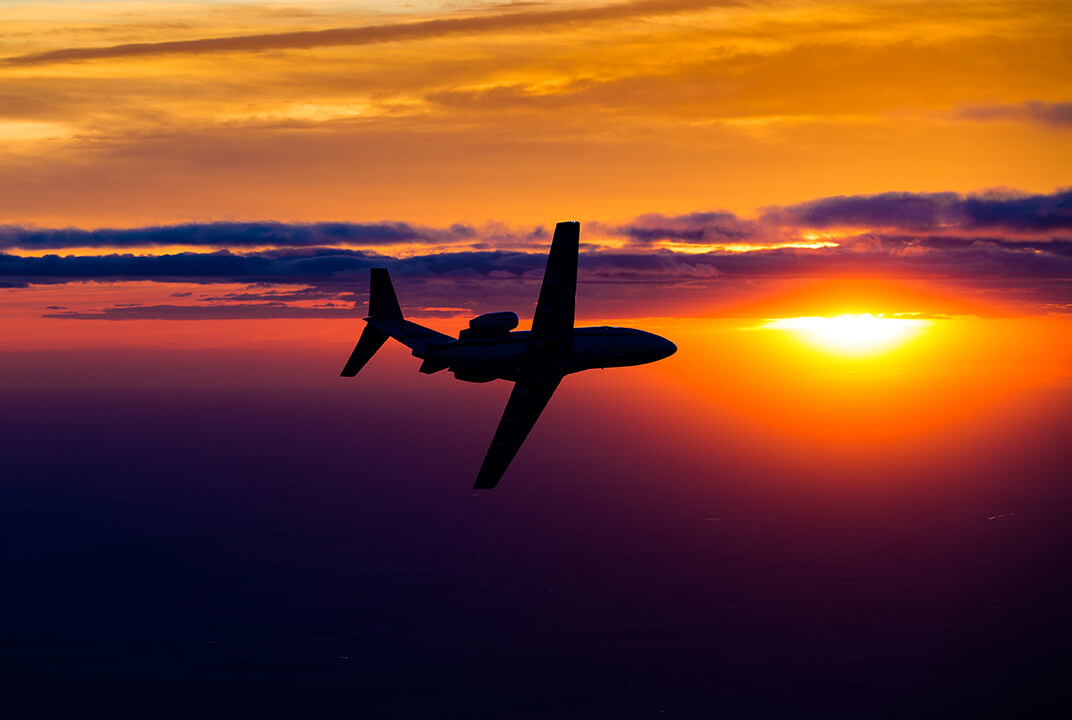Insight | Better broadband will transform business aviation
Better broadband will transform business aviation
Aviation
Why connectivity is the missing link in the private flying passenger experience
Business aviation – typically the private jets used by corporate executives, wealthy individuals and VIPs – is about getting passengers from A to B as efficiently as possible. That efficiency isn’t about cost, but rather delivering a service that commercial airlines can’t match.
The last thing a business jet passenger wants is to miss an important message from the office just because they’re in the air. The last thing a business jet pilot wants is for that passenger to miss a critical meeting just because they can’t change their flight plan in response to that message. After all, at the high net worth level, time is arguably as important a factor – if not more so – than cost. New-generation high-speed connections to the cabin and cockpit can ensure the ‘flying office’ is as capable as that on the ground.
A brief history of inflight broadband
Travelling by private jet can certainly be luxurious and efficient, but it’s taken a couple of decades until the experience could be described as ‘connected’. Digital inflight connections to the cabin first appeared in the 1990s and while they did at least make onboard fax machines practical, they were glacially slow by modern standards.
As better personal mobile technology became available, passengers soon wanted to use that to communicate, rather than retro-fitted equipment. Cabin Wi-Fi half-solved that problem, but the ‘just-about-broadband’ that’s been connected to it for the last 10 years struggles with much more than email.
Nonetheless, narrowband and broadband connectivity were still major leaps forward for business aviation. Now with communications providers readying true always-on inflight broadband with performance to match 4G mobile data on the ground, business aviation is ready to take the next step.
Related service
Flexibility needs reliability
Bringing high-speed broadband to the cabin transforms it from a place where some kinds of work can be done into a true proxy for the office – with the same access to the same services. Business aviation passengers can make calls using their own mobile phone and be called on the phone numbers known to everyone. Large files can be downloaded, large attachments sent by email and virtual meetings attended via high-quality video conferencing.
Better connectivity revolutionises cockpit services, too. High-speed data brings with it crystal-clear digital voice services, free from the line-of-sight limitations of traditional radio and with none of the frequency congestion air traffic control worldwide currently has to deal with.
The only catch is that for all of this to be possible, that high-speed data has to be available at every point on the planet. As Kurt Weidemeyer, a Senior Vice President in Inmarsat Aviation, points out: “Business jets can fly anywhere in the world and so all passengers care about is getting good inflight broadband speed globally – and it had better be consistent. It has to work the same everywhere.”
With satellite constellations that leave only polar regions exposed and ‘steerable’ beams to supply extra connectivity on demand (so no slow-downs on popular flight paths), consistency is what new-generation inflight communication services for business aviation can now deliver. That is at least when those services are delivered by technology partners with a track record of reliability and the resources to provide the seamless coverage that comes from a single network.
"“All passengers care about is getting good inflight broadband speed globally – and it had better be consistent.”"
"“When you need to a make a decision in the cockpit, three to four minutes fumbling with paper is an eternity.”"
More entertained and more informed
Inflight entertainment also gets a boost from high-speed broadband. Private jets typically lag behind commercial airline cabins when it comes to keeping passengers occupied with something other than work, but more bandwidth brings more options. All business aviation passengers need is the smartphone, tablet or laptop they already travel with. Everything else is online and, with an always-on connection, always available.
Private jet pilots get to do more with their gadgets, too. Exempt from the approval processes commercial pilots face, most already use iPads as an electronic flight bag, not least because a half-kilo tablet takes up less space (and burns less fuel) than a leather one packed with 20kg of paper. Offline access to information loaded on the ground only offers so much, of course, but broadband in the cockpit means electronic flight bags can now be online in the air.
Maps, charts, documentation and data clearer than that provided by some avionics can all be accessed in an instant, and that’s more than just a convenience. As Jim Freeman, a pilot and director of flight standards at Alaska Airlines, told The New York Times: “The iPad allows pilots to quickly and nimbly access information. When you need to a make a decision in the cockpit, three to four minutes fumbling with paper is an eternity.”
Connected electronic flight bags mean flight plans can be changed more easily to cater for passenger need and prevailing weather conditions – although access to real-time weather data over cockpit internet makes even that less problematic.
"“Aircraft properly equipped with satellite communications technology that provides accurate positional and operational data will get preferential treatment over continental airspace and busy cities.” "
Efficiency matters
All of which brings us back to the efficiency that drives business aviation. Passengers obviously want to spend as little time in the air as necessary, but high-speed inflight connectivity means they’ll also spend less unwanted time on the ground – something that benefits operators, too.
Speaking to Via Satellite, Jonathan Kletzel, US airlines and transportation leader at PricewaterhouseCoopers, said “New [internet] pipes, whether ground or satellite-based, allow airplanes to send more data through in real time. This will allow airlines to look at parts that might be problematic and provides an early warning system.”
This kind of predictive maintenance will pay dividends for business aviation, where an aircraft waiting on the tarmac for repairs is an aircraft not earning its keep. Identifying faults and sourcing replacement parts while a plane is still in the air will shave hours off turnaround times, which means fewer delays for passengers and more reliable fleets for operators.
Real-time flight data will also reduce operational costs. Flight paths can be readily adjusted mid-flight to optimise fuel consumption and, according to Inmarsat’s Kurt Weidemeyer, better-connected business aircraft will get to their destinations faster via aeronautical ‘fast lanes.
“When airline operations centres know an aircraft’s location at all times, there can be a higher density of aircraft on a particular route,” says Weidemeyer. “So aircraft properly equipped with satellite communications technology that provides accurate positional and operational data will get preferential treatment over continental airspace and busy cities.”
The inflight broadband benchmark
Digital inflight communication has come a long way in the last 20 years, but the changes seen so far will pale compared to those high-speed inflight broadband makes possible – and business aviation will benefit most.
High-speed digital connections to the cockpit and cabin offer unprecedented flexibility for both operators and passengers, and the greater regulatory freedom enjoyed by the industry ensures rapid uptake of the technology. New passenger experiences, greater revenue opportunities, more streamlined operations and increased safety are all on the table and business aviation will be a showcase for what the ‘complete connected aircraft’ of the next 20 years should be.


